Discover how to select and serve this tropical treat, including tips on how to cut star fruit and the best ways to enjoy star fruit taste!
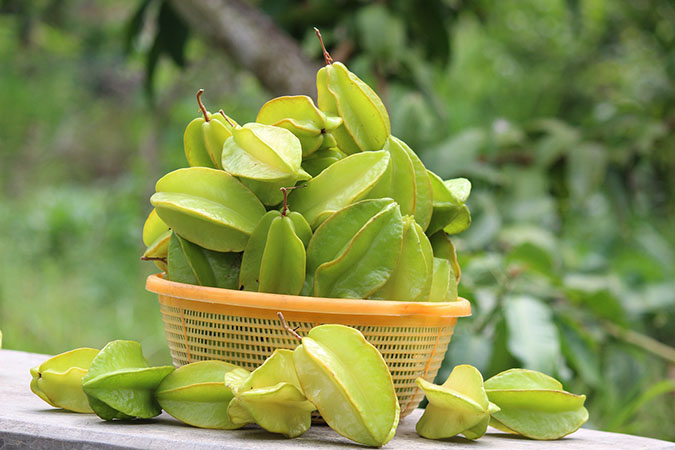
Image by Paresh Biswas from Pixabay
How To Cut Star Fruit—Plus More Tips on This Tropical Treat
Learning how to cut star fruit is just the beginning of uncovering the wonders of this fancy fruit favorite. But before we get there, let’s learn a little about star fruit itself.
Also known as carambola, star fruit is a unique tropical fruit with a sweet and sour flavor. Native to the Malayan peninsula, it is cultivated in many parts of Southeast Asia, China, and many Pacific Islands. Although abundant and plentiful, carambola has yet to gain real popularity, especially in the Western world. It is recognized as belimbing manis in many Southeast Asian regions and kamrakh in India.
Star Fruit Shines in the Garden
This small, bushy evergreen tree grows very well under hot, humid, tropical conditions. The plant bears small, lilac-colored, bell-shaped flowers in clusters that develop into oblong-shaped fruit with characteristic five-angled edges. These ribs are what make the fruit look like a starfish when cut in cross sections.
Both sweet and sour varieties begin to yield under cultivable orchards. They are ready for harvesting when the plants reach about 3-4 years old.
You May Also Enjoy:
How to Grow 21 Amazing Fruit Trees From Seed
What Does Star Fruit Taste Like?
We’re glad you asked! Inside each fruit, you’ll find a crisp, juicy pulp that can either be mildly sweet or extremely sour. It all depends upon the cultivar type and the amount of oxalic acid concentration.
Each star fruit weighs about 70-130 g and can vary from light green to yellow, with an attractive smooth, waxy surface. In some varieties, 2-5 tiny edible seeds are found at the center of each angled cavity.
Small Fruit . . . Powerful Benefits
Image by Gundula Vogel from Pixabay
Behind that distinctive star fruit taste is a bevy of bonus antioxidants and minerals. And, as many of you know, our real interest in any fruit or vegetable centers around not only its taste but also its nutritional value. The star fruit is no exception, and it has much to offer!
Low-Calorie Leader
Star fruit is one of the most low-calorie exotic fruits available. Savor 100 g of fruit for only 31 calories, which is much lower than any other popular tropical fruit. Nonetheless, it bears an impressive list of essential nutrients, antioxidants, and vitamins required for well-being.
Take Your Vitamins!
The fruit contains good quantities of vitamin C, which is a powerful natural antioxidant. Just 100 g of fresh fruit provides 57 percent of the daily required levels of vitamin C. Consumption of fruits rich in this vitamin assists the human body in both developing resistance against infectious agents and scavenging harmful, pro-inflammatory free radicals from the body.
Star fruit is also a good source of B-complex vitamins such as folate, riboflavin, and pyridoxine (vitamin B6). Together, these vitamins help as co-factors for enzymes in metabolism as well as in various synthetic functions inside the body.
You May Also Enjoy:
Elderberry Syrup, the Magic Elixir (With Recipe!)
Along with its waxy peel, the fruit also provides a good amount of dietary fiber, which helps prevent absorption of dietary LDL cholesterol in the gut. The dietary fiber also helps protect the colon’s mucous membrane from exposure to toxic substances by binding to cancer-causing chemicals.
Antioxidant Superstar
Star fruit is rich in an antioxidant phytonutrient called polyphenolic flavonoids. Some of the important flavonoids present are quercetin, epicatechin, and gallic acid. These compounds work together to help protect from deleterious effects of oxygen-derived free radicals by warding them from the body.
Be Mineral-Minded
The fruit also carries small amounts of minerals and electrolytes like potassium, phosphorus, zinc, and iron. Potassium is an important component of cell and body fluids and helps to control heart rate and blood pressure, thus countering the bad influences of sodium. Most Western diets involve the overconsumption of sodium.
Its juice is often recommended in many folk medicines in Brazil as a diuretic (to increase urine output), an expectorant, and a cough suppressant.
How to Cut Star Fruit to Be the Star of Your Dish
Start by shopping for star fruit that is uniform, large, and a rich yellow-orange color. Avoid green, smaller fruits since they tend to be extremely acidic and unappetizing. Don’t buy shriveled or spotted star fruit or those with cuts and bruises.
To prepare, wash them thoroughly in cold water. Dry mop using absorbent cloth or paper towels. Trim off the ends, and thoroughly dry the ribbed edges. Cut the fruit crosswise into thin sections, which will resemble stars. (Yep! This is obviously how they got their name!) Finally, pick out any seeds located near the center, if you wish.
You May Also Enjoy:
Where Can I Buy Some Seeds to Grow a Navel Orange Tree?
How to Serve Up Star Fruit
Image by Jenny Shead from Pixabay
Use star fruit as a garnish in salads, sorbets, and drinks, as well as to impart a tart flavor to dishes. Choose only the sweet variety of carambola to eat fresh or to mix with other fruits in salads. Juice the fresh fruit to use in cocktails mixed with complementary tropical fruit juices.
Use the sour fruit to impart a unique tart flavor to poultry, beef, lamb, and seafood dishes. Add cut sections of fresh fruit to Asian stews, curries, and stir-fries with chicken, fish, and shrimp.
Finally, you can also transform the fruit into sauces, pickles, chutney, tarts, and jams.
When Is Star Fruit Available?
Fresh star fruit can be available twice in a season. In Florida and parts of Texas, for example, Arkin cultivars are available from December to March. In general, fruits just short of the ripening stage are picked for shipment and storage. This is because ripe fruits bruise easily, especially along their thin, ribbed edges.
Ripe fruits tend to perish early, but they stay well-preserved in cold storage when kept at appropriate temperatures in your refrigerator. At home, unripe, light green fruits may be kept at room temperature until they turn orange-yellow in color. They then need to be refrigerated. Ripe fruits may keep well for 2-3 days at room temperature, but they must be stored inside the refrigerator for extended shelf life.
You May Also Enjoy:
3 Ways to Preserve Food for Long-Time Storage
The Top 10 Tropical Staple Crops [VIDEO]
Foraging for Wild Grapes (+My Old Family Recipe for Grape Hull Preserves!)
What Do You Think?
What’s your favorite way to cut star fruit? How do you serve it? Let us know your best tips and recipes for enjoying star fruit taste.
——————————————
This is an updated version of an article that was originally published on September 30, 2016. The author may not currently be available to respond to comments; however, we encourage our Community members to chime in to share their experiences and answer questions!
The Grow Network is a participant in the Amazon Services LLC Associates Program, an affiliate program designed to provide a means for our team to earn fees for recommending our favorite products! We may earn a small commission, at no additional cost to you, should you purchase an item after clicking one of our links. Thanks for supporting TGN!

The Grow Network is a global network of people who produce their own food and medicine. We’re the coolest bunch of backyard researchers on Earth! We’re constantly sharing, discovering, and working together to test new paths for sustainable living—while reconnecting with the “old ways” that are slipping away in our modern world. We value soil, water, sunlight, simplicity, sustainability, usefulness, and freedom. We strive to produce, prepare, and preserve our own food and medicine, and we hope you do, too!
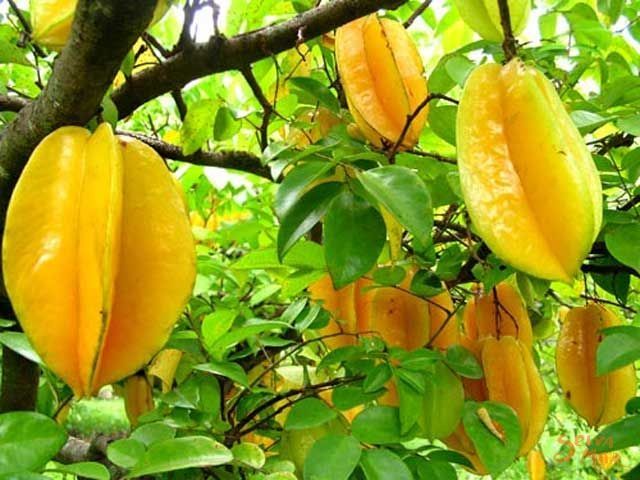
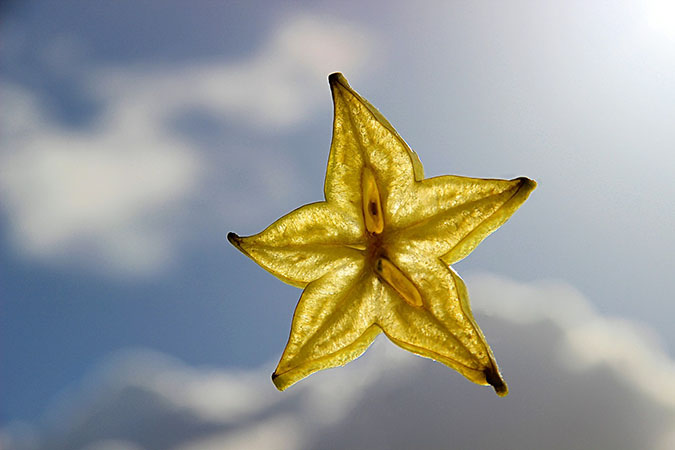
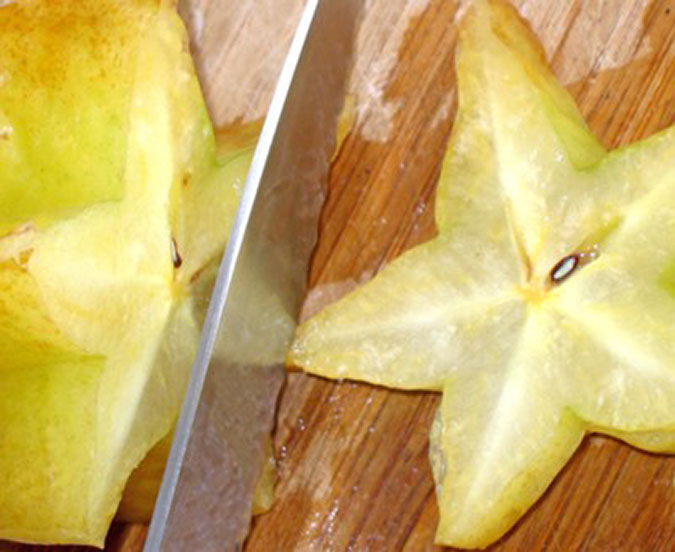
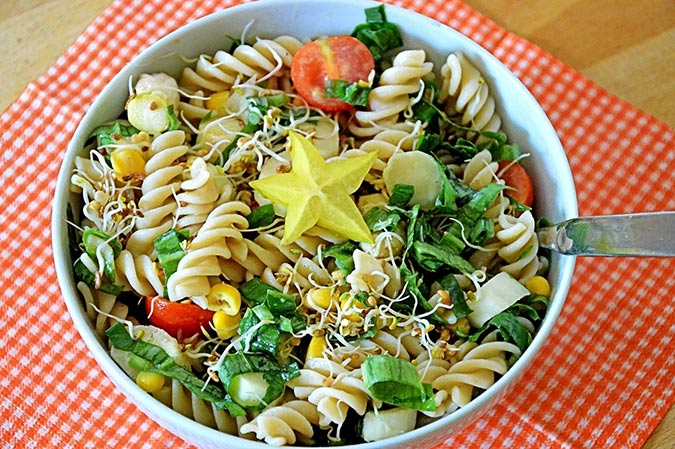







COMMENTS(4)
the star fruit has a toxic component that eaten in big amounts can affect our body, especially in people with a failing kidney. I do not got any reference in English but I send you one in Spanish.
http://sociedadvenezolana.ning.com/m/blogpost?id=2575830%3ABlogPost%3A924262
I grew up in South Miami Florida and we had many fruiting trees including three Carambola (star fruit) trees. Since I was a latch-key kid (in the early 70’s) and often found myself locked out of the house after school, having lost my key, I was very thankful for the juicy, sweet fruit and cool shade of those trees! Just pick and eat. The “trick” to sweet fruit is to wait until they’re ripe!! A green fruit is bitter; yellow fruit is sour; orange fruit is juicy and mildly sweet…just right. I’m sorry that I took those trees for granted! I very rarely come across ripe star fruit in the grocery stores here in Alabama. Unless you’re just using the fruit as a garnish, don’t waste your money on unripe fruit as it will usually rot before it ripens to sweetness.
In response to Herminio Escobar’s comment above, I used to eat LOTS of these fruit and never had any trouble. Perhaps a different variety? I clicked on the link (I don’t know why, I can’t read Spanish!). I was hoping that there would be a translate key, but I didn’t see one. Thanks for the information, though. I will research star fruit toxicity.
I live in California… my daughter in Florida had a Star Fruit tree that kind of made it through Hurricane Irma… her husband found a baby Star Fruit under it, so they are hoping it grows. I live in Ione, in the foothills south of Sacramento. It is too hot & dry in the summer to grow here, but is there a market that might catty them? We have Asian markets nearby. I don’t know if Trader Joe’s carried them… they have a lot of vegetarian foods & non-MO & & Organic foods. Thanks, Sharon Phillips… email:
bill45shar46@yahoo.com
Another way to cut star fruit is to divide it along the fins and remove the seeds. This now looks like an orange section. I freeze them and add to Indian style milk shakes ( yogurt, fruit, milk with dash of cardamom and honey) we also make star fruit bread and muffins. Very prolific tree.